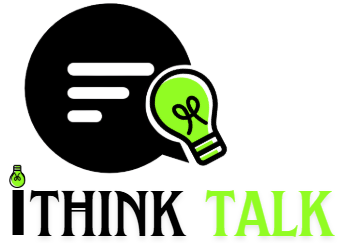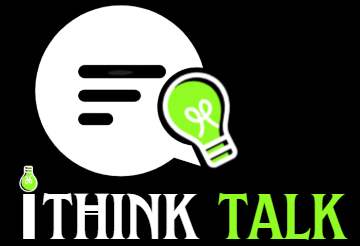Thinking putty has become a popular tool for both kids and adults, not just as a playful distraction but as a powerful aid for enhancing creativity, focus, and stress relief. This fascinating material, known for its unique properties and sensory appeal, has gained recognition in classrooms, workplaces, and therapy settings. In this article, we will delve into the science behind thinking putty—exploring its non-Newtonian characteristics, its impact on the brain, and practical ways to incorporate it into daily routines for maximum benefits.
Understanding Thinking Putty: A Non-Newtonian Marvel
At the core of thinking putty’s appeal is its classification as a non-Newtonian fluid. Unlike typical solids and liquids, non-Newtonian fluids change their viscosity under stress. When you pull thinking putty slowly, it stretches smoothly; but when you apply force quickly, it snaps or breaks. This unusual behavior is due to its silicone-based composition, which consists of long polymer chains that temporarily link and unlink under different stress conditions.
Dr. Thomas Farber, a materials scientist at MIT, explains:
“The unique flow properties of thinking putty arise from its viscoelastic nature, which means it exhibits both viscous (liquid-like) and elastic (solid-like) characteristics depending on how force is applied.”
This tactile variability is more than just fun—it engages multiple sensory pathways in the brain, which can have profound cognitive benefits.
The Neuroscience of Touch: How Thinking Putty Enhances Focus
Touch is one of the most powerful senses when it comes to influencing our mental state. The act of manipulating thinking putty stimulates nerve endings in the skin, sending signals to the brain that can improve focus and calm anxiety.
A 2018 study published in the Journal of Occupational Therapy found that individuals who used tactile tools like thinking putty during tasks showed a 22% improvement in concentration compared to those who did not. The repetitive motions involved in stretching, folding, and squeezing putty can activate the brain’s default mode network (DMN), which is associated with creativity and problem-solving.
Dr. Emily Chen, a cognitive psychologist, notes:
“Fidgeting with objects like thinking putty provides a non-distracting outlet for excess energy, helping the brain to maintain focus on the primary task at hand.”
This is why thinking putty has become a common tool in classrooms for children with attention disorders, as well as in workplaces for professionals who need to concentrate during long meetings.
Stress Reduction Through Sensory Stimulation
In addition to enhancing focus, thinking putty can also serve as a powerful stress-relief tool. The act of squeezing and molding putty activates the parietal lobe, a part of the brain involved in processing sensory information. This sensory input can lower cortisol levels, the hormone responsible for stress, making it an effective tool for managing anxiety.
Research from the American Journal of Psychiatry indicates that sensory-based therapies, including the use of tactile objects, can reduce symptoms of anxiety by up to 18%. The smooth, pliable texture of thinking putty provides a soothing experience, allowing users to self-regulate their stress responses.
Boosting Creativity: Engaging Both Hemispheres of the Brain
Creativity often requires both divergent thinking (generating multiple ideas) and convergent thinking (narrowing down those ideas to a single solution). The bilateral hand movements involved in manipulating thinking putty can help synchronize the left and right hemispheres of the brain, facilitating a balance between these two modes of thinking.
A 2020 study by the University of California found that participants who used tactile tools, including thinking putty, were able to solve creative puzzles 15% faster than those who did not. The physical act of playing with putty can stimulate the prefrontal cortex—the part of the brain responsible for decision-making and creativity—by increasing blood flow and neural activity.
Dr. Lucas Bennett, a neuroscientist specializing in creativity research, explains:
“Engaging in hands-on activities like manipulating putty creates a form of embodied cognition, where physical actions can influence cognitive processes and enhance creative thinking.”
Tips for Integrating Thinking Putty into Daily Routines
Incorporating thinking putty into your daily routine is simple and can yield significant benefits for focus, creativity, and stress relief. Here are some practical tips:
- At Work: Keep a small tin of thinking putty at your desk to use during meetings or while brainstorming. The subtle tactile input can help you maintain concentration without being disruptive.
- During Study Sessions: For students, using thinking putty while reading or reviewing notes can enhance retention and reduce test anxiety.
- Mindful Breaks: Take short, mindful breaks with thinking putty during long tasks. Focus on the texture and movements to give your brain a rest and return refreshed.
- Creativity Boost: Use thinking putty during creative tasks such as writing, drawing, or problem-solving. The bilateral movements can help unlock new perspectives.
- Stress Relief on the Go: Carry a small piece of thinking putty in your bag to use during stressful situations, such as waiting for an appointment or traveling.
Choosing the Right Thinking Putty
Thinking putty comes in various types with different properties, such as magnetic, glow-in-the-dark, and heat-sensitive options. When selecting a putty, consider the following:
- Texture: Softer putties are ideal for stress relief, while firmer options provide more resistance for focus and creativity.
- Features: Magnetic or color-changing putties add an additional sensory dimension that can enhance engagement.
- Size: Portable tins make it easy to integrate putty use into your daily routine.
Conclusion
Thinking putty is more than just a playful distraction—it is a powerful tool for enhancing focus, reducing stress, and boosting creativity. Its non-Newtonian properties, combined with the benefits of sensory stimulation, make it an excellent choice for students, professionals, and anyone looking to improve cognitive performance. By integrating thinking putty into your daily routine, you can harness the power of tactile stimulation to unlock your full potential.
For more tips on enhancing your mental performance, check out our article on how to think like a man.





